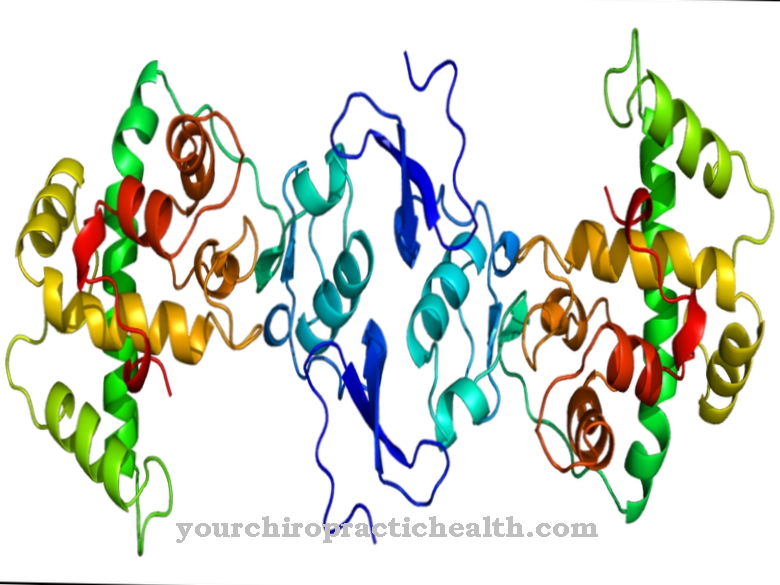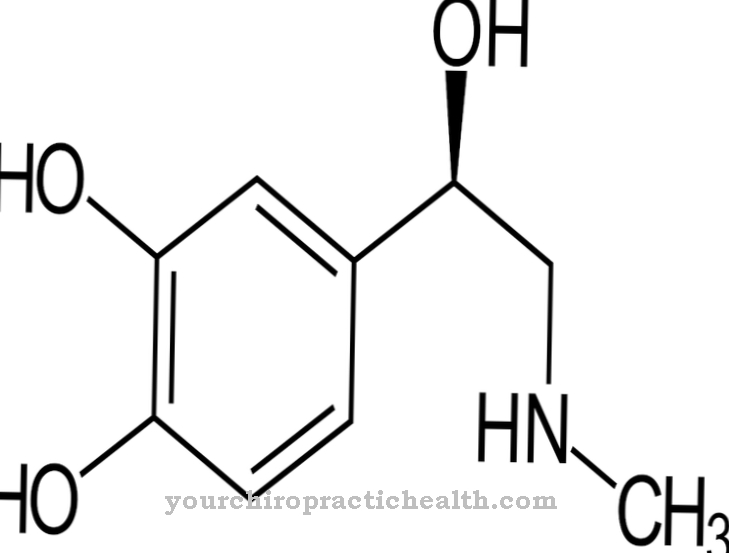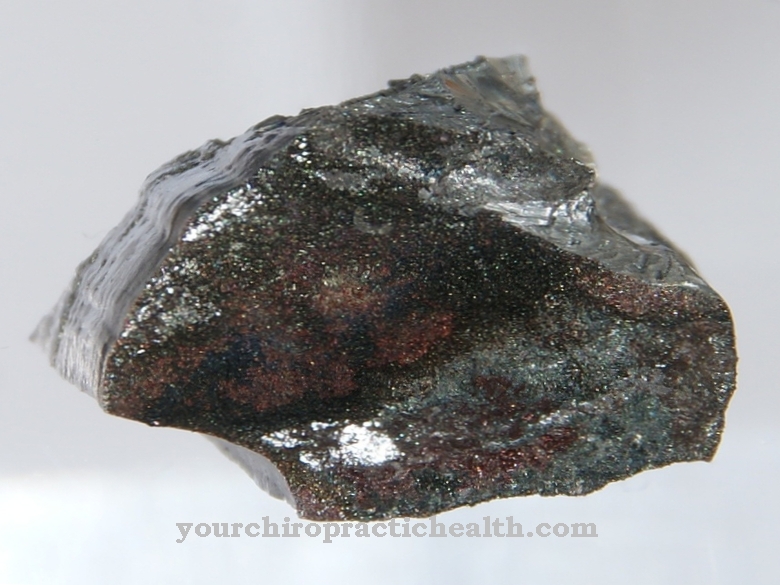Lysyl hydroxylases represent a group of enzymes which are responsible for the hydroxylation of lysine residues within proteins. So they mainly contribute to the structure of the connective tissue. Disturbances in the function of lysyl hydroxylases are expressed in diseases such as scurvy or the hereditary Ehlers-Danlos syndrome.
What are lysyl hydroxylases?
Lysyl hydroxylases are enzymes whose job it is to catalyze the post-translational modification of the amino acid lysine by incorporating a hydroxyl group into hydroxyl lysine. This strengthens the connective tissue because its protein chains are given the opportunity to network further via the hydroxyl groups.
The human lysyl hydroxylase consists of 727 amino acids. The lysyl hydroxylases also belong to the group of hydroxylases, i.e. enzymes that generally catalyze the incorporation of hydroxyl groups into molecules. In addition to lysyl hydroxylases, the hydroxylases or oxidoreductases also include prolyl hydroxylases, phenylalanine hydroxylase, tyrosine hydroxylase or tryptophan hydroxylase. Especially together with the prolyl hydroxylases, the lysyl hydroxylases play an important role in the function of the connective tissue. Both enzyme groups require the coenzyme vitamin C for their function.
Function, effect & tasks
The function of the lysyl hydroxylases consists exclusively of catalyzing the incorporation of hydroxyl groups into lysine residues within a protein. In the course of a post-translational modification, the amino acid hydroxylamine is formed from lysine.
Although hydroxylamine is also free, it cannot be incorporated into protein in this form. Post-translational modification therefore means the subsequent conversion of this amino acid after the protein has been built up. When a hydrogen atom is exchanged for the hydroxyl group, a functional group that can perform bridging functions is built into the protein at this point. With the help of the hydroxyl group, different protein chains can link together. Furthermore, sugar molecules can bind to this functional group. Both reactions are very important, among other things, in the development of connective tissue.
The connective tissue encloses the organism and the internal organs. It has to be firm and taut in order to be able to differentiate between the functionally different organs. This is ensured by the proteins of the connective tissue, which contain a high percentage of the amino acids lysine and proline.For this purpose, both amino acids are subsequently partially modified after their incorporation into the protein by adding a hydroxyl group. As already mentioned, with proline this reaction is catalyzed by prolyl hydroxylases and with lysine by lysyl hydroxylases. After protein formation, these modification reactions create a network of protein chains that represent tight connective tissue.
Without the function of both enzymes, the development of functional connective tissue would not be possible at all. However, both enzymes only work with the help of the coenzyme ascorbic acid, i.e. vitamin C. With structurally altered enzymes through mutation or a lack of vitamin C, this can lead to disruptions in the structure of the connective tissue and thus to serious diseases.
Education, occurrence, properties & optimal values
The PLOD1 gene is responsible for coding human lysyl hydroxylase. The name PLOD1 is derived from the name of the lysyl hydroxylase "procollagen lysine, 2-oxoglutarate-5-dioxygenase 1". This gene is located on chromosome 1. Since new connective tissue is constantly being produced, there is also a permanent need for the production of lysyl hydroxylases. A mutation of this gene can therefore have very serious consequences for the health of the organism.
Diseases & Disorders
Disturbances in the function of lysyl hydroxylases play a particularly important role in scurvy and Ehlers-Danlos syndrome. Scurvy is known as an ancient seafaring disease, which is caused by a lack of vitamin C. Vitamin C, also known as ascorbic acid, functions as a coenzyme of lysyl hydroxylases and prolyl hydroxylases. If it is missing, the amino acids lysine and proline in connective tissue protein can no longer be hydroxylated.
Since there is a constant build-up and breakdown of connective tissue proteins, the protein chains are less and less able to network during the period of vitamin deficiency. The connective tissue becomes slack and can no longer fulfill its function properly. A variety of symptoms occur, including general exhaustion, susceptibility to infection, bleeding gums, tooth loss, poor healing of wounds, severe skin problems, muscle wasting and many other health impairments. Scurvy can ultimately lead to death from general heart failure or severe infections. The ancient seafarers were particularly affected because they could not get enough vitamin C during the long voyages at sea.
It has been shown that the disease heals immediately when certain foods such as sauerkraut are given. It was only later recognized that the cause of the disease was a vitamin C deficiency. The outbreak of the seafarer's disease scurvy was later prevented by feeding the seafarers with sauerkraut. Another disease, which can only partially be attributed to a defect in human lysyl hydroxylase, is Ehlers-Danlos syndrome. The Ehlers-Danlos syndrome is a collective term for various hereditary connective tissue diseases with different causes. This syndrome is characterized by severe connective tissue weakness.
The skin is overstretchable and the joints are overmovable. A genetically modified lysyl hydroxylase triggers the Ehlers-Danlos syndrome type VI. A mutated gene called PLOD1, which is located on chromosome 1, is responsible for this. The defective enzyme formed from this is no longer fully functional and can only insufficiently catalyze hydroxylation reactions on lysine. A weak connective tissue develops with the known symptoms as well as additional involvement of the eyes and internal organs. Type VI Ehlers-Danlos syndrome can be inherited as an autosomal recessive trait.













.jpg)

.jpg)
.jpg)











.jpg)